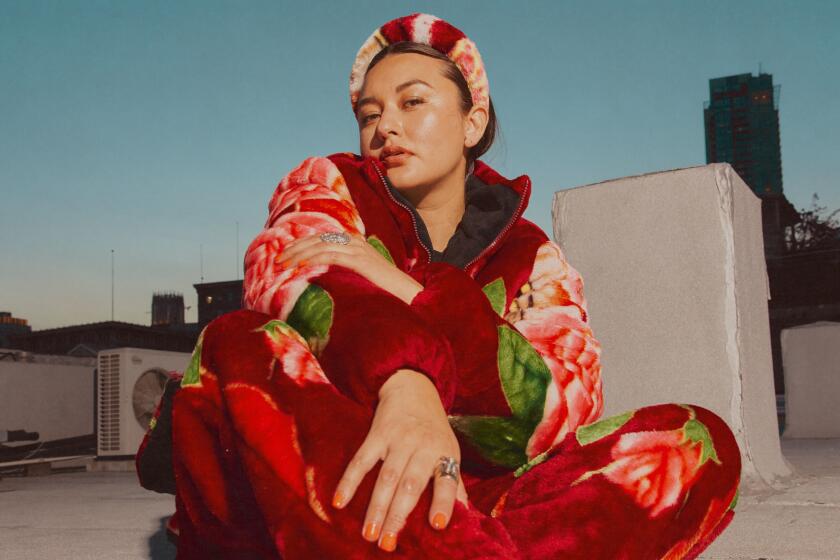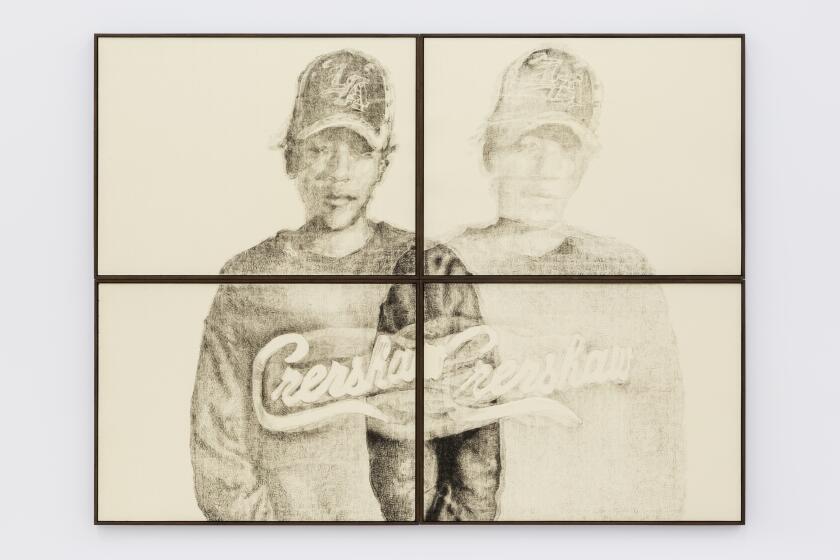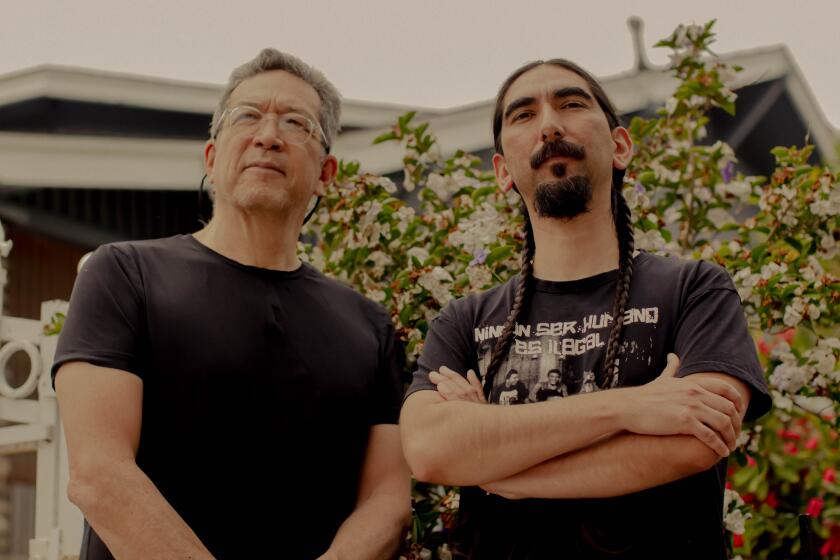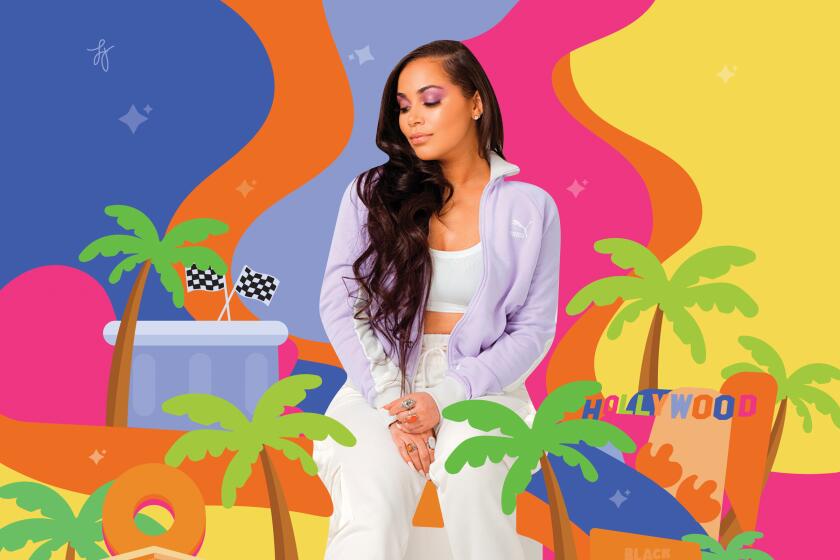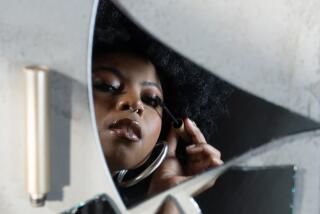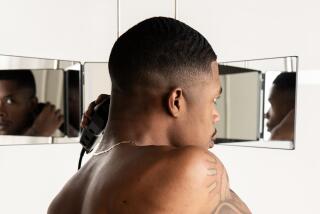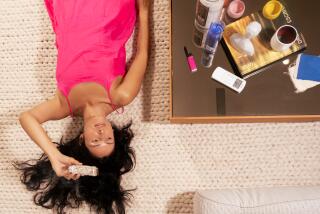- Share via
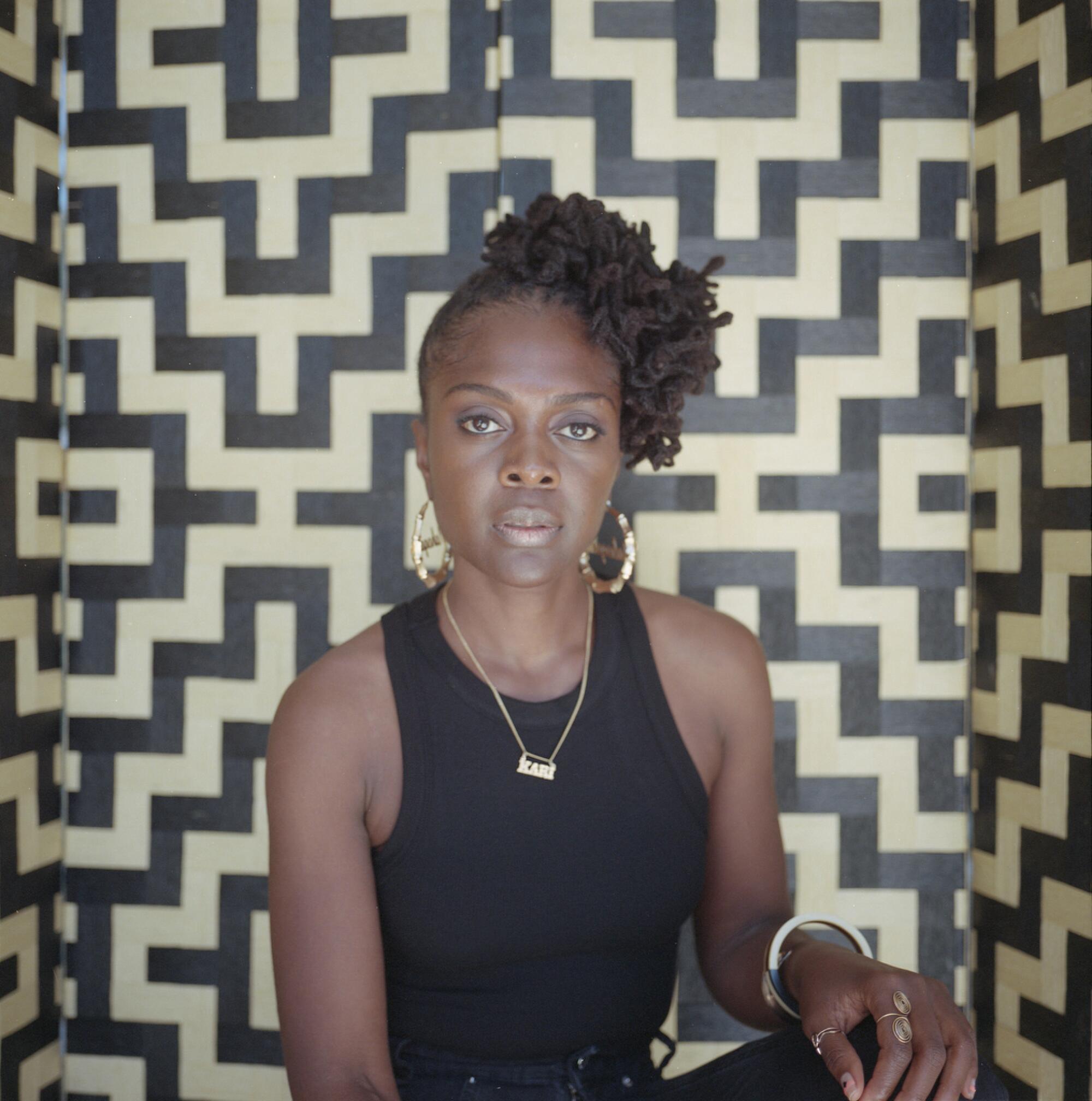
This story is part of L.A. — We. See. You!, the second issue of Image, which explores various ways of seeing the city for what it is. See the full package here.
Kari Williams has spent most of her life thinking about Black hair, including her own. Like her mother, Williams wears her hair in locs, which during our recent video call she parted on the side. “In my personal hair journey, I’ve never had a relaxer,” she told me. “I wanted a Jheri curl, I wanted some type of chemical in my hair, but my mother never did and she would really press upon me the importance of just really loving my hair.”
Williams grew up in South Central Los Angeles during the ’90s — before the area was rebranded to South L.A. Her style inspirations were Janet Jackson in “Poetic Justice,” Stacey Dash in “Clueless” and Brandy in, well, everything. “Any time I saw a Black girl with braids I was like, ‘Oh, we on, I want these braids,’” she said. “Those images really resonated with me.”
Williams is best known for creating Goddess Locs — a form distinguished by the use of human hair extensions to create a faux loc with loose curls at the end. She created them for actress Meagan Good in 2015. Williams is also a hair and scalp expert (she has a doctorate in trichology); a salon owner (Mahogany Hair Revolution in Beverly Hills); a celebrity stylist (for clients like Willow Smith, Ayesha Curry and Ava DuVernay); and a teacher.
She constantly tells her students that it’s their personal touches that will elevate their work. “I can teach you the technique all day long but when it comes to the artistry, that’s within each unique individual,” she said. “That’s why I love to refer to stylists within the Black community who create Black hairstyles as artisans.”
Who were your natural hair icons growing up? You talked about how seeing your mom embrace her natural hair influenced you, but who are other figures who influenced your style?
More from issue 2 of Image
Darian Symoné Harvin talks to Lauren London about Nipsey Hussle, acting, and how seeking truth is an act of love
We wanted to know about the real L.A. So we asked our favorite Angelenos to show us
Ismail Muhummad meditates on how Noah Purifoy imagined a future where people aren’t discarded
E. Tammy Kim talks to the activists who have the antidote for the erasure of East L.A.
Julissa James profiles the L.A. designer who remade the cobija into luxury fashion
Ian F. Blair talks to Kenturah Davis about language and the tradition of Black art from the foothills to South L.A.
The first person that comes to mind is Brandy. I grew up in the era of being able to see the beautiful Brandy on TV, on the cover of her albums, with braids. My mom had been braiding my hair for as long as I can remember. I used to get tired of the braids; I used to want my mom to do my hair differently. So to see a Black girl like me on TV with braids — [Brandy] became a beautiful example of like, “Oh, wait a minute, braids are fly.”
How did you get started as a hairstylist?
I’m the oldest of three kids and I’ve always loved doing hair. I remember doing hair at an early age, with my dolls. Then my little sister was born and I started playing in her hair. I remember being young and my mom just being like, “Oh, you can do her hair.” But I remember always loving it and always being really interested and intrigued by hair.
I was never encouraged, though, to pursue hairstyling as a career. So as much as I loved it, I also excelled really well academically. It was actually in college — because now I’m in this really highly academic and competitive environment — that I started to ask myself those questions, like, “What do I want to do for the rest of my life?” And the answer to that, for me, was hair.
What kind of styles or types of hair do you like to experiment with?
I started off doing avant-garde [styles] and creating different photo shoots. When I have the opportunity to create something avant-garde and to incorporate accessories or huge shapes and things like that, that excites me. I like having fun with hair. Really being able to turn my creativity up and create shapes and even possibly create a story through hair, that’s the best.
How did you get into the photo shoots?
I’m an artist at heart and so I wanted to find creative ways to really display my talent and my work. And so I started doing photo shoots in college, in creative environments. I created mohawks and all of these things.
I knew that we didn’t see a lot of these images in mainstream media. So it was just my way of creating images that didn’t just look like the traditional-type hair — front, side, back. I wanted it to look beautiful and fun and exciting. So I put a lot of time and energy into creating these shoots. And then I would want to, again, create a story.
I remember I did a hair show and in my head, my models were these fairies of nature. And so I created a mohawk of feathers and then I did this fishbowl style with trees and it was this whole thing and it was so fun. But that’s just an example of how I started off wanting to just show natural hair in a different light, honestly because I didn’t see a lot of it. And so I figured, well, create it. If you don’t see it, Kari, create it.
How Equihua cobijas became jackets for Lil Nas X, Young Thug
The natural hair space has changed so much since I was growing up. Now there are better products on the market, there are YouTube videos, there’s more education about how to take care of your natural hair. When do you think that shift started?
I would say it was early 2000s — 2008, 2009. I remember by that time I had opened my salon in L.A. in 2007 and it was an anomaly. People actually were just like, “There’s no way an all natural hair salon is going to survive in L.A., the land of weaves.”
In the early 2000s, you had blogs starting to pop up. You had your early bloggers like your Afrobella, your Natural Chica, these young Black women who were starting to create these safe spaces, speaking to women who look like them, on choosing to wear their hair natural and curly, out and curly. Then you had white people on more of a massive scale entering into the market and they started to change the language around curls. That’s when you started hearing more about sulfate-free — you can’t put sulfates on your curls, no silicones. We started seeing more — on a broader scale — education coming out on curly.
They started calling it a trend because we started seeing more products: your Kinky Curly, Miss Jessie’s, Curls. Now we see and know, especially as Black women, that our hair is not trendy. But what it did was it opened up the door for us to see more examples of ourselves with our hair in its natural state.
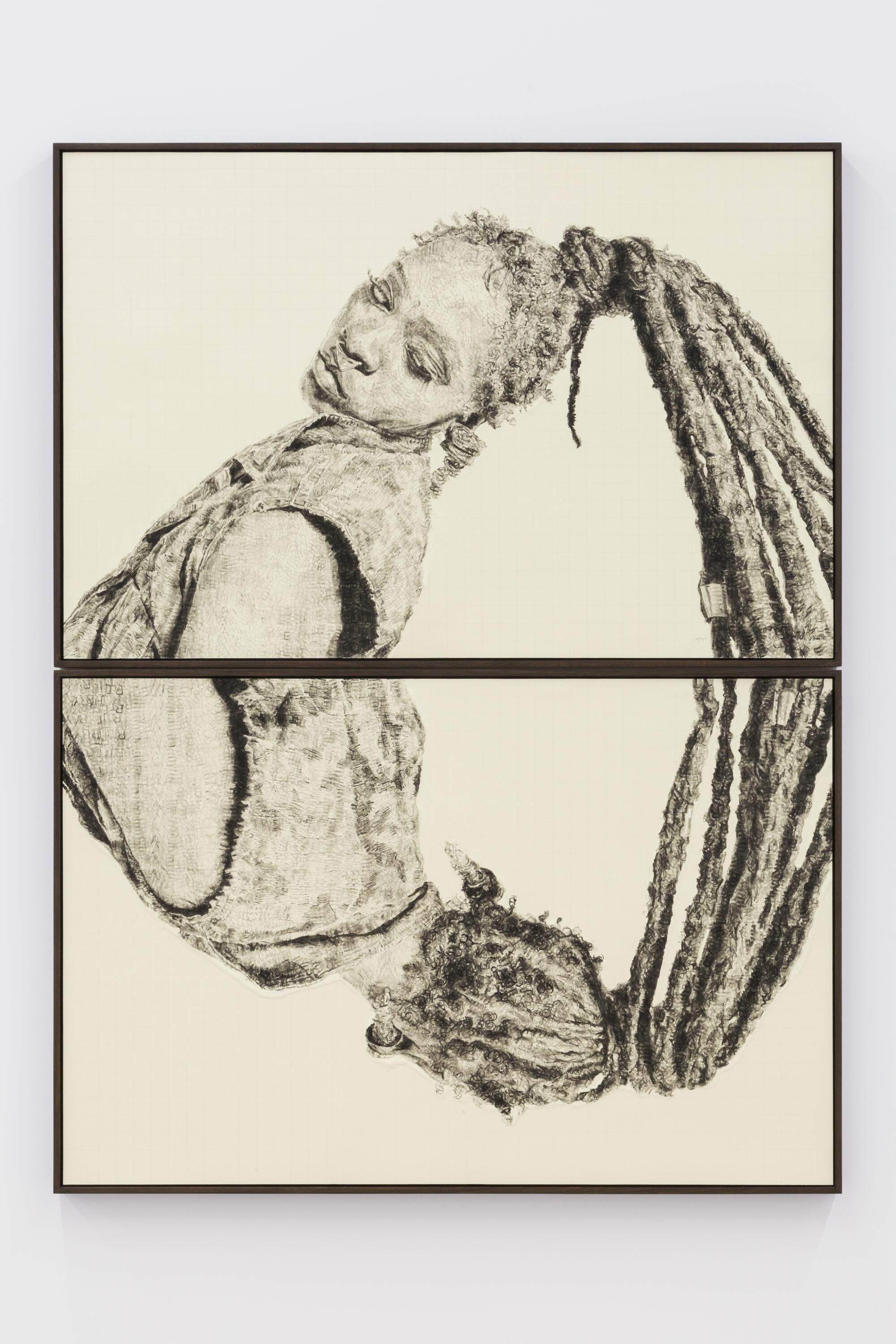
When I think of what makes a braid or twist style stunning, I think of the symmetry, the neatness, just the attention to detail. What does beauty look like to you when it comes to Black women’s hairstyles?
I agree with you, the artistry of Black women’s hairstyles definitely lies in the patterns, the shapes that we’re able to create with our hair. The shapes that defy gravity are beautiful. And then the patterns, the symmetry of the parting, the fact that we can literally draw through our hair to create these works of art that make it so beautiful.
For sure, the finishing touches, so the neatness of the look as well. But I will say that artistry really comes with the shapes and, because our hair is so moldable and it’s so versatile, we’re able to create so many different and unique shapes and we’re able to blend textures and techniques.
Let’s talk about the Goddess Locs — you created the style and have a patent pending. How did you come up with it?
The style was actually inspired by Meagan Good. She happened to contact me. When faux locs were coming back around, everybody was getting silky locs and faux locs. So Meagan wanted her version, but she wanted her version to look like Lisa Bonet. And my initial reaction was, “Girl, God did that, that’s her hair.” But she was confident that I would figure it out. And I figured it out by literally way of prayer, because I was still very convinced that it was not possible. But God gave me a vision where I, literally, in my head, saw how to create this loc using hair that I had used before but for different types of looks. It kind of just came together. So I created the look for her in 2015 and it blew up. It was something that was unique.
What is it about these ’90s styles, like Bonet’s locs and the other styles that are coming back, that makes them timeless?
It’s not even just the ’90s styles. I think what it is, is truly a revolution — we go through phases. And what happens with each generation is that the names change, and so it feels new. But when we think about the artistry and the different styles that we’re wearing and you start looking at pictures, they existed long before we started doing them. When I think about the styles in the ’90s — box braids, we called them dookie braids. Silky locs, which are now faux locs. And then we have Lisa Bonet’s hair, which we didn’t have a Goddess Loc, but it was just like silky locs. Tree braids are now waterfalls. So what happens is, we have these looks and then they’re just adopted by the next generation. But again, what makes it feel different, maybe even look different, is the different artisans in the generation that take inspiration from what was created before and the uniqueness within their gifts making it feel and/or look new.
More from issue 2 of Image
L.A. artist interview: Kenturah Davis
